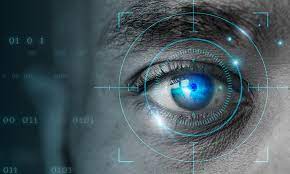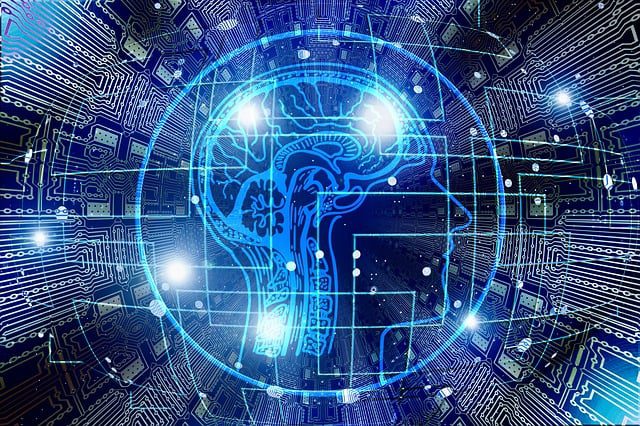Master the Art of Training Image Datasets in Machine Learning
In the world of machine learning, training image datasets is an art that can make or break the success of a model. With the explosive growth of artificial intelligence applications, mastering this crucial skill is more important than ever. In this article, we delve deep into the techniques and strategies to help you become a pro at training image datasets.
From selecting the right dataset to preprocessing the images for optimal results, we will guide you through every step of the process. We will explore popular tools and libraries like TensorFlow and PyTorch, discussing the pros and cons of each.
But it doesn’t end there. Understanding the challenges and pitfalls associated with training image datasets is equally important. We will shed light on issues such as overfitting, class imbalance, and data augmentation, providing practical tips to overcome them.
Whether you are a seasoned machine learning practitioner or just starting out, this article will equip you with the knowledge and skills to take your image dataset training to new heights. Get ready to enhance your models and achieve better results with the power of a well-trained image dataset.
Steps to prepare and preprocess training image datasets
Training image datasets form the foundation of any machine learning model. They are essential for teaching the model to recognize patterns, make predictions, and perform tasks. The quality and composition of the training dataset directly impact the performance of the model. A well-trained image dataset can improve accuracy, reduce errors, and enable the model to generalize well to unseen data. On the other hand, a poorly trained dataset can lead to biased or unreliable predictions.
To ensure the success of your machine learning project, it is crucial to understand the importance of training image datasets. By investing time and effort into creating a high-quality dataset, you can set your model up for success. This involves carefully selecting relevant images, labeling and annotating them accurately, and organizing the dataset in a way that facilitates effective training.
Training image datasets also play a critical role in transfer learning, where pre-trained models are used as a starting point for new tasks. By fine-tuning the pre-trained model using a specialized dataset, you can leverage the knowledge and features learned from a large dataset and apply it to your specific problem domain.
Overall, training image datasets are the building blocks of machine learning models. They provide the necessary information for the model to learn and make predictions. Investing in high-quality datasets will ultimately lead to more accurate and reliable models.

Techniques for labeling and annotating training image datasets
Preparing and preprocessing training image datasets is a crucial step in the machine learning pipeline. It involves transforming raw images into a format that is suitable for training the model. This process includes tasks such as resizing images, normalizing pixel values, and handling missing or corrupted data.
The first step is to gather a diverse and representative dataset. Depending on your problem domain, this might involve collecting images from various sources, such as online repositories, data providers, or even creating your own custom dataset. It is important to ensure that the dataset covers a wide range of variations and scenarios that the model is expected to encounter in real-world situations.
Once you have collected the dataset, the next step is to preprocess the images. This involves resizing the images to a consistent shape, typically square or rectangular, to ensure compatibility with the model architecture. Additionally, it is important to normalize the pixel values to a standardized range, such as [0, 1] or [-1, 1], to improve the convergence of the training process.
Handling missing or corrupted data is another crucial aspect of preprocessing. It is common for datasets to contain missing images or images that are corrupted or unreadable. In such cases, it is important to have a robust data cleaning process that identifies and removes these problematic images from the dataset.
By following these steps, you can ensure that your training image dataset is properly prepared and preprocessed, setting the stage for effective model training and accurate predictions.
Choosing the right algorithms for training image datasets
Labeling and annotating training image datasets is a critical step in machine learning. It involves assigning meaningful labels and annotations to each image in the dataset, enabling the model to learn and make predictions based on these labels.
Manual labeling is a common approach where human annotators manually assign labels to each image. This process can be time-consuming and labor-intensive, especially for large datasets. However, it offers the advantage of high accuracy and control over the labeling process. Automated labeling techniques, on the other hand, utilize algorithms and pre-trained models to assign labels automatically. While this approach can be faster, it may not always produce accurate results, especially for complex or ambiguous images.
In addition to labeling, annotating training image datasets involves adding additional information or metadata to the images. This can include bounding boxes, keypoints, segmentation masks, or any other relevant information that helps the model understand the content and context of the images.
There are several tools and frameworks available to assist with the labeling and annotation process. These tools provide a user-friendly interface for annotators to assign labels and annotations to the images. Some popular tools include LabelImg, RectLabel, and VGG Image Annotator (VIA). These tools often support various annotation types and export formats, making it easier to integrate the annotated dataset into the training pipeline.
Overall, labeling and annotating training image datasets are essential steps in machine learning. They provide the necessary information for the model to learn and make accurate predictions. By leveraging the right techniques and tools, you can streamline the labeling and annotation process, saving time and ensuring high-quality datasets.
Best practices for training image datasets in machine learning
Choosing the right algorithms for training image datasets is crucial for achieving optimal results. Machine learning offers a wide range of algorithms, each with its own strengths and weaknesses. Understanding the characteristics of different algorithms and their suitability for specific tasks is essential for selecting the most appropriate one for your dataset.
Convolutional Neural Networks (CNNs) are the most commonly used algorithms for training image datasets. They are specifically designed to process visual data and are highly effective in capturing spatial dependencies and extracting meaningful features from images. CNNs have achieved remarkable success in image classification, object detection, and image segmentation tasks.
When selecting an algorithm, it is important to consider factors such as model complexity, computational requirements, and available training data. Deep learning models, such as ResNet, Inception, and VGG, are known for their exceptional performance but require significant computational resources and large amounts of training data. On the other hand, simpler algorithms like Support Vector Machines (SVMs) or Random Forests may be suitable for smaller datasets or resource-constrained environments.
Transfer learning is another technique that should be considered when choosing algorithms for training image datasets. Transfer learning involves leveraging pre-trained models that have been trained on large-scale datasets and fine-tuning them for specific tasks. This approach can save significant training time and resources, especially when working with limited data.
Ultimately, the choice of algorithm depends on the specific requirements of your project, the nature of your dataset, and the available resources. It is important to evaluate and compare different algorithms to identify the one that best suits your needs and maximizes the performance of your trained image dataset.
Evaluating and fine-tuning the performance of trained image datasets
Training image datasets in machine learning requires careful planning and execution to achieve optimal results. Here are some best practices to consider when training image datasets:
-
Data Augmentation: Data augmentation techniques, such as rotation, scaling, and flipping, can help increase the diversity and variability of the training dataset. This can improve the model’s ability to generalize to unseen data and reduce overfitting.
-
Regularization: Regularization techniques, such as L1 or L2 regularization, dropout, or early stopping, can prevent overfitting by imposing constraints on the model’s parameters or stopping the training process before it becomes too complex.
-
Hyperparameter Tuning: Experiment with different hyperparameter values, such as learning rate, batch size, or optimizer, to find the optimal configuration that maximizes the model’s performance. This can be done through techniques like grid search or random search.
-
Monitoring and Evaluation: Regularly monitor the training process and evaluate the model’s performance on validation or test datasets. This allows you to identify any issues or improvements needed during the training process.
-
Ensemble Learning: Consider using ensemble learning techniques, such as bagging or boosting, to combine multiple models and improve overall performance. This can help mitigate the impact of individual model weaknesses and increase robustness.
By following these best practices, you can enhance the performance of your trained image datasets and achieve better results in machine learning tasks.
Tools and resources for training image datasets in machine learning
The evaluation and fine-tuning of trained image datasets are crucial steps in the machine learning pipeline. Once the model has been trained on the dataset, it is important to assess its performance and make any necessary adjustments to improve results.
Evaluation metrics such as accuracy, precision, recall, and F1 score can provide insights into the model’s performance on the test or validation datasets. These metrics help measure the model’s ability to correctly classify or predict images and can guide decisions on further improvements.
If the performance of the model is unsatisfactory, several techniques can be employed to fine-tune the trained image dataset. One approach is to collect additional training data to increase the dataset size and diversity. This can help the model generalize better and reduce overfitting.
Another technique is to adjust the hyperparameters of the model. This involves tweaking values such as learning rate, batch size, or regularization parameters to find the optimal configuration that improves performance. Hyperparameter tuning can be done manually or through automated techniques like Bayesian optimization or genetic algorithms.
Additionally, conducting error analysis can provide valuable insights into the model’s weaknesses and areas for improvement. By analyzing misclassified or poorly predicted images, you can identify patterns or common characteristics that the model struggles with. This information can guide further dataset improvements, algorithm adjustments, or feature engineering.
Overall, evaluating and fine-tuning the performance of trained image datasets is an iterative process that requires continuous monitoring and improvement. By leveraging evaluation metrics, collecting additional data, and adjusting hyperparameters, you can enhance the performance of your model and achieve better results.
Common challenges and solutions in training image datasets
Training image datasets in machine learning requires the use of various tools and resources to streamline the process and improve efficiency. Here are some popular tools and resources that can assist you in training image datasets:
-
TensorFlow: TensorFlow is a powerful open-source machine learning framework that provides a wide range of tools and libraries for training image datasets. It offers high-level APIs like Keras for building and training neural networks, as well as lower-level APIs for more advanced customization.
-
PyTorch: PyTorch is another popular deep learning framework that provides tools and libraries for training image datasets. It offers dynamic computational graphs, making it easier to build and debug complex models. PyTorch also provides a rich ecosystem of pre-trained models and resources for transfer learning.
-
scikit-learn: scikit-learn is a versatile machine learning library that provides a wide range of algorithms and utilities for training image datasets. It offers a consistent API for various tasks, such as classification, regression, and clustering. scikit-learn also includes tools for data preprocessing, model selection, and evaluation.
-
OpenCV: OpenCV is a computer vision library that provides a wide range of image processing and manipulation functions. It is particularly useful for preprocessing and augmenting training image datasets. OpenCV supports various image formats and provides efficient algorithms for tasks like resizing, cropping, and filtering.
-
ImageNet: ImageNet is a large-scale dataset of labeled images that has been widely used for training deep learning models. It contains millions of images across thousands of categories, making it a valuable resource for transfer learning and benchmarking performance.
-
DeepArt: DeepArt is an online platform that allows users to train and fine-tune deep learning models using their own custom datasets. It provides a user-friendly interface for dataset management, model training, and evaluation. DeepArt also offers a marketplace for sharing and collaborating on trained models.
By leveraging these tools and resources, you can simplify the training process, save time, and improve the performance of your trained image datasets.
Conclusion and future trends in training image datasets in machine learning
Training image datasets in machine learning can be challenging, with several common issues that can impact the quality and performance of the trained models. Here are some challenges you may encounter and practical solutions to overcome them:
-
Overfitting: Overfitting occurs when the model becomes too specialized to the training dataset and fails to generalize to new, unseen data. To overcome overfitting, you can apply techniques like data augmentation, regularization, or early stopping. These methods help introduce diversity and constraints to the training process, preventing the model from memorizing the training dataset.
-
Class Imbalance: Class imbalance refers to datasets where one or more classes have significantly fewer samples than others. This can lead to biased models that favor the majority classes. To address class imbalance, techniques such as oversampling, undersampling, or using class weights can be employed. These methods help balance the class distribution and ensure equal representation of all classes during training.
-
Data Augmentation: Data augmentation techniques, such as rotation, scaling, or adding noise, can help increase the diversity and variability of the training dataset. This can improve the model’s ability to generalize to unseen data and reduce overfitting. However, it is important to ensure that the augmentation does not introduce unrealistic or misleading patterns that can hinder the model’s performance.
-
Limited Training Data: Limited training data can pose challenges in achieving optimal model performance. To mitigate this issue, techniques like transfer learning, data synthesis, or active learning can be employed. Transfer learning allows you to leverage pre-trained models and knowledge from large-scale datasets. Data synthesis involves generating synthetic samples to augment the training dataset. Active learning involves iteratively selecting the most informative samples for annotation to improve the model’s performance.
By being aware of these challenges and applying the appropriate solutions, you can overcome obstacles and improve the quality and performance of your trained image datasets.

